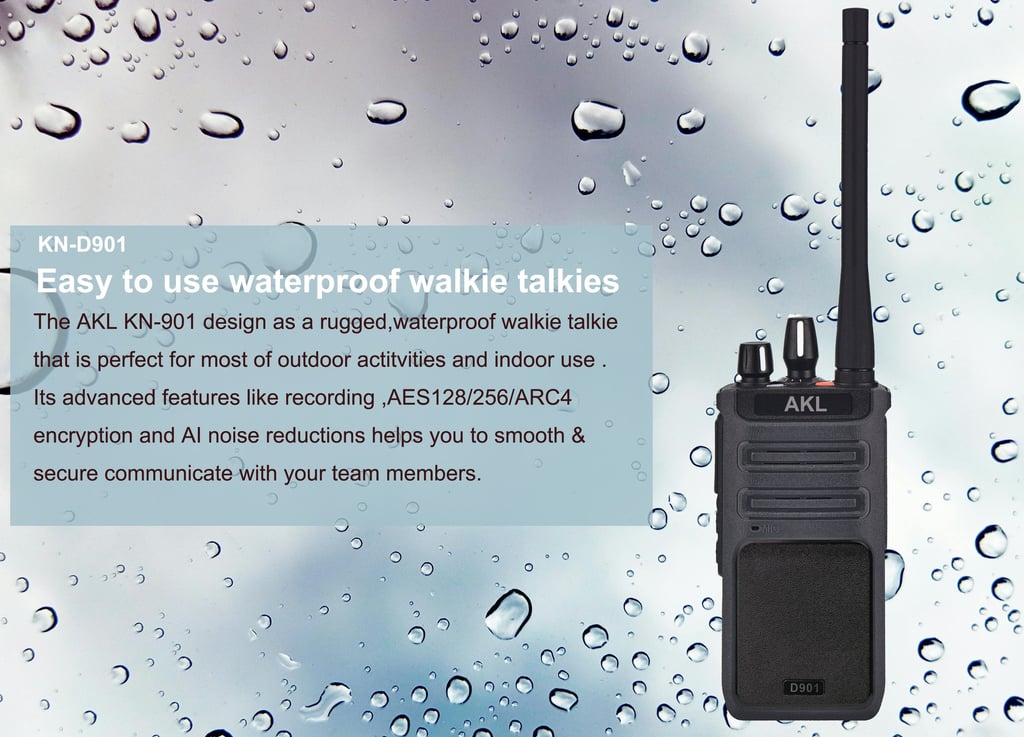How to design the two way radio with IP67 waterproof well ?
waterproof design for walkie-talkies is one of the key factors to ensure their reliable operation in harsh environments. By adhering to reasonable waterproof design principles and employing advanced waterproof technologies, walkie-talkies can be effectively protected from water damage, prolonging their service life and enhancing their reliability and stability
Ally
3/20/20242 min read


When designing walkie-talkies, especially for outdoor or harsh environments, waterproof design is crucial. In this article, we will explore the principles of waterproof design for walkie-talkies and methods to achieve waterproof performance.
1. Waterproof Rating Standards
When discussing waterproof design, it is essential to first understand waterproof rating standards. Organizations such as the International Electrotechnical Commission (IEC) and the European Telecommunications Standards Institute (ETSI) have issued a series of standards for waterproof ratings, such as IP67, IP68, etc. These standards indicate the waterproof performance of devices under different conditions. IP67 means that the device can withstand brief immersion in water, while IP68 implies that the device can withstand prolonged immersion.
2. Sealing Performance
The waterproof performance of walkie-talkies mainly depends on their sealing performance. Therefore, when designing waterproof walkie-talkies, it is necessary to ensure that critical components such as battery compartments, electronic component interfaces, etc., are completely sealed to prevent water ingress.
3. Material Selection
Material selection is crucial for waterproof design. Common waterproof materials include silicone sealing rings, fluororubber sealing rings, etc. These materials have excellent water resistance and can effectively protect the internal components of walkie-talkies from water damage.
4. Structural Design
In the structural design of walkie-talkies, waterproof performance should be considered. For example, using a double-layer structural design, the outer protective shell can prevent direct contact with water, while the inner structure provides support for the body and installation space for electronic components.
5. Sealing Testing
To verify the waterproof performance of walkie-talkies, rigorous sealing tests must be conducted. This includes pressure tests, immersion tests, etc., to ensure that walkie-talkies can maintain good waterproof performance under various conditions.
6. Application of Waterproof Technology
In addition to the basic principles mentioned above, advanced waterproof technologies can also be applied to enhance the waterproof performance of walkie-talkies. For example, using special coating technologies to provide circuit boards with excellent waterproof performance; adopting magnetic charging interfaces to prevent water ingress at the interfaces, etc.
Conclusion
In conclusion, waterproof design for walkie-talkies is one of the key factors to ensure their reliable operation in harsh environments. By adhering to reasonable waterproof design principles and employing advanced waterproof technologies, walkie-talkies can be effectively protected from water damage, prolonging their service life and enhancing their reliability and stability. When designing and manufacturing walkie-talkies, it is essential to prioritize waterproof performance to meet the needs of users in various environments.
Chenghui International Park ,Nan 'an,Quanzhou ,Fujian ,China 362300.
Your Secure Communication Is Our Mission


allyxubin
ally@akl-tech.com anson@akl-tech.com
© 2024-2025 All rights reserved. AKL Technology Co.,Limited All Rights Reserved.
POC Radio
DMR Radio
Analog Radio
Radio Accessories
86-15859775920
